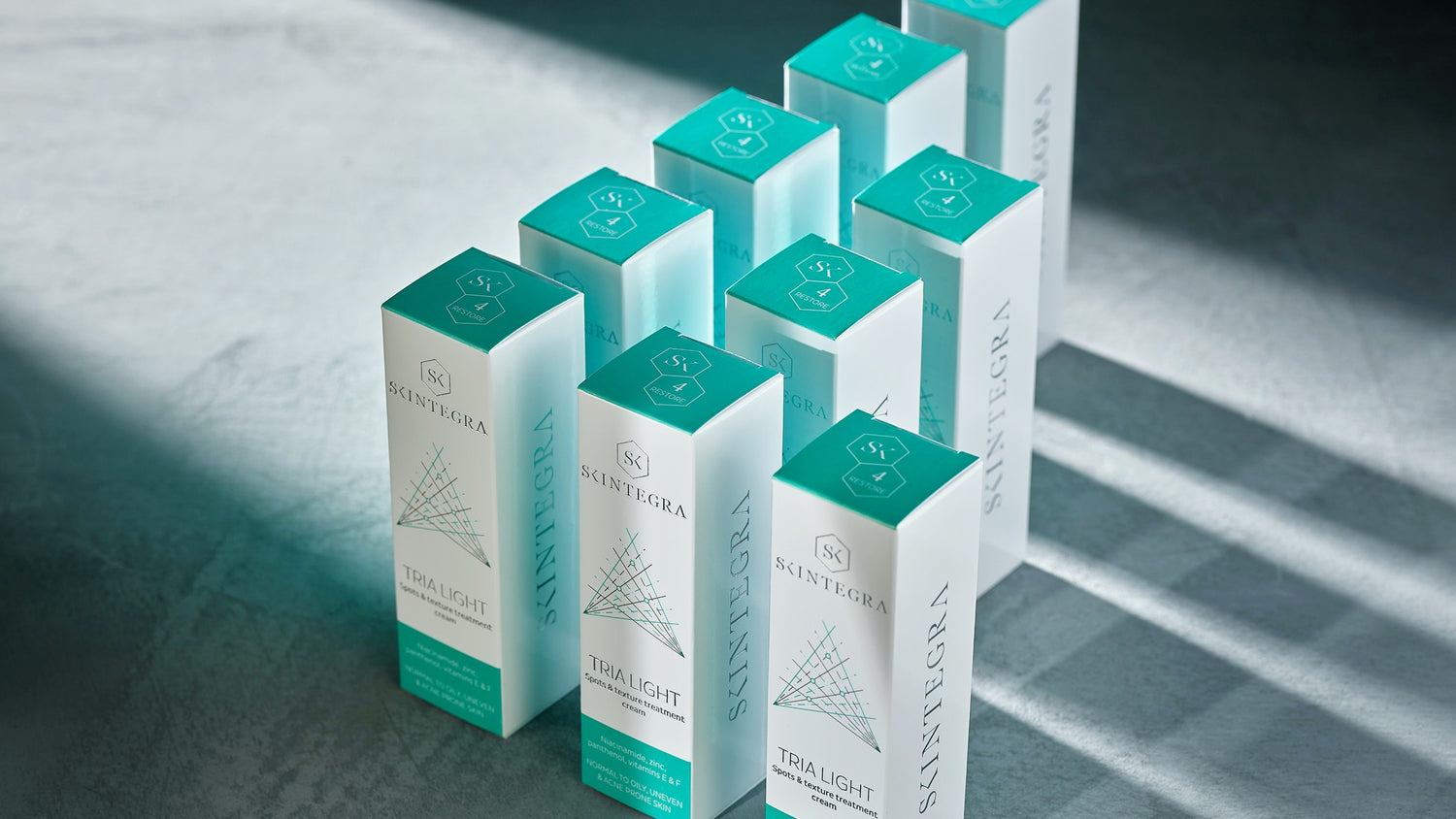Due to its function as an interface between the body and the environment, the skin is constantly exposed to oxidative stress induced by reactive oxygen species (ROS) that arise from endogenous sources, such as enzymatic activity or activated neutrophils, and external pro-oxidative stimuli, such as UV radiation. ROS induce the oxidation of lipids on the skin, i.e. sebum components, which plays an important role in the formation of acne. But let's start from the beginning.
Sebum is a fatty substance secreted by our sebaceous glands, and it is made up of triglycerides, free fatty acids, wax esters, squalene and a small amount of cholesterol, cholesterol esters and diglycerides. In healthy skin, the role of sebum is to secrete it onto the surface of the skin and create a hydrolipid layer that protects the skin from cold, pathogens and prevents transepidermal water loss.
However, there is another side of the coin, so sebum plays a key role in the development of acne. Oxidation of sebum causes an inflammatory response of the skin, and it is precisely the combination of irritation and clogged pores that is most responsible for the appearance of the inflammatory form of acne.

How does sebum oxidation lead to acne?
Acne is caused by increased activity of the sebaceous glands that secrete sebum in the pilosebaceous follicle, which is made up of a hair follicle and the sebaceous gland attached to it. Excessive production of sebum is caused by the work of androgenic hormones. In addition to the increased amount of sebum, the changed composition of the lipid components in the sebum is also crucial for the formation of acne. The sebum of individuals suffering from acne is particularly rich in squalene. Lipid peroxidation of sebum components is considered a trigger that initiates the inflammatory process as a prerequisite for the formation of acne because oxidized sebum, due to a change in its chemical structure, becomes a comedogen on the skin. Also one of the key factors in the formation of acne is the locally reduced production of linoleic acid, which has been shown to have an inhibitory effect on the formation of ROS. Lipid peroxidation occurs when the sebum on the surface of the skin is exposed to oxidative stressors, but also in the pore itself due to UVA radiation. Lipid peroxidation of sebum results in its thickening and leads to hyperkeratosis and the formation of comedones, which prevents further discharge of sebum. This created ideal conditions for the reproduction of the bacterium C. acnes , which is found in every pilosebaceous follicle and is the main cause of inflammatory acne. C. acnes secretes enzymes that help break down triglycerides into free fatty acids that irritate the skin and promote an inflammatory effect. Finally, as an immune response to the action of the C. acnes bacteria, inflammatory acne occurs.
How to reduce sebum oxidation?
In addition to the altered composition of lipid components in sebum, a deficiency of vitamins E and C, two very important antioxidants that protect the skin from oxidative stress, has also been observed in individuals suffering from acne . The presence of sufficient amounts of vitamins E and C, although they do not represent a cure for acne in themselves, is very important in cosmetic products because it stops the chain reaction of negative effects that oxidative stress has on the skin, through exposure to harmful environmental factors such as cigarette smoke, smog, traces of heavy metals and UV radiation.

Skinintegra products containing vitamin E and C:
Tria Light is a treatment cream for skin prone to acne and comedones and contains even 2 forms of vitamin E that have regenerative, reparative and antioxidant effects , preventing lipid peroxidation of sebum.
Superba C is a concentrated serum that, in addition to vitamin E, also contains 10% sodium ascorbyl phosphate (SAP), which is an extremely safe and stable form of vitamin C that acts as a potent antioxidant on the skin and is proven to reduce oxidative stress. Even relatively small amounts of SAP, at least 5%, are sufficient to regulate skin prone to acne and sebum hyperproduction. It is important to emphasize that SAP is mild enough even for very sensitive skin.
Literature:
- Capitanio B, Lora V, Ludovici M, Sinagra JL, Ottaviani M, Mastrofrancesco A, Ardigò M, Camera E. Modulation of sebum oxidation and interleukin-1α levels associates with clinical improvement of mild comedonal acne , J Eur Acad Dermatol Venereol 28(12) ) (2014) 1792-7.
- Bowe, WP, & Logan, AC Clinical implications of lipid peroxidation in acne vulgaris: old wine in new bottles, Lipids in Health and Disease , 9(1) (2010) 141.
- Briganti S, Picardo M. Antioxidant activity, lipid peroxidation and skin diseases . What's new J Eur Acad Dermatol Venereol 17(6) (2003) 663-9.

